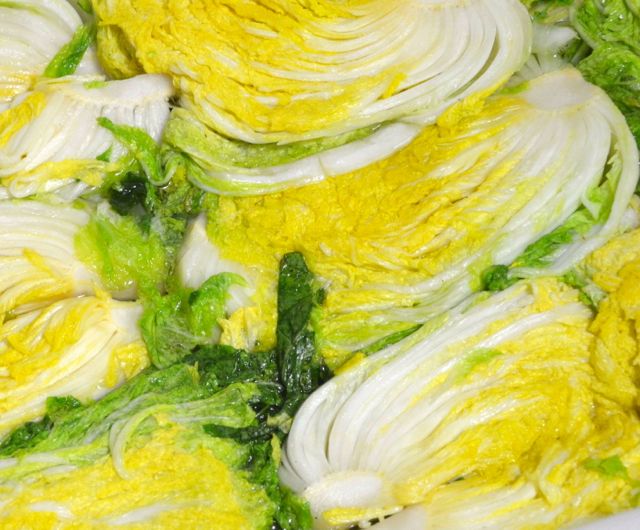
About this time last year I helped my mother-in-law’s Kimjang at her house and in return, I brought home couple containers of her yummy Kimjang. This year, I decided that it was time I tried it all on my own. I was a bit worried that I may not be able to handle the large amount of ingredients but hey, you have to take risks in life, right?
In late September, after my potato harvest, we planted Korean cabbages (배추 Baechoo), radishes (무우 Moo), Korean leeks (대파 Daepa) and mustard greens(갓 kaat) at our family farm for Kimjang.
After about 2 months, they were ready for picking. These pictures were taken around 11/20 or so. I came home with 16 cabbages, 9 radishes and a huge bunch of mustard greens. Also about two large bunches of Korean leeks. I bought the rest from the market.
Because I basically used the same Kimjang kimchi recipe from last year I will not list it again here. However, I will write more in depth about prep work- especially brining/salting cabbages. I know I mentioned in my last year’s post how most people just buy already brined cabbages (절임 배추 jeorim baechoo) because people say that’s the most difficult part of Kimjang both in terms of complexity and effort. You can use these tips for pickling cabbages in making regular small batch Kimchi at home.
How to brine (pickle) Korean napa cabbage (배추 baechoo) for Kimchi:
Ingredients
- 5 KOREAN NAPA CABBAGES (about 6 lb/2.7 kg each)
- 12 Cups or 5 lb/2.3 kg coarse SEA SALT (bitterns removed)
- 70 Cups/16.5 litre/17.5 qt cold or lukewarm WATER
- 1 gallon size bowl
- 1 giant container or bathtub to hold cabbages while they are brined
- 1 giant strainer/colander to drain brined cabbages
Directions
- Clean cabbage – Clean and cut away any outer leaves that are too damaged, brown or dirty. Most likely, your local market will sell already cleaned cabbages in which case need to do nothing. **Make sure you leave some good greenish outer leaves so you can use it to wrap the kimchi at the end.
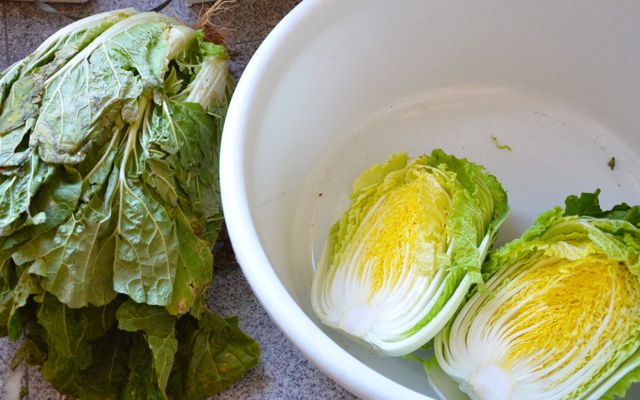
Cleaning cabbage for Kimjang kimchi Note how large the baechoo is on the left compared to the cleaned and cut ones on the right.
- Cut each cabbage in half. Tip for cutting cabbage for Kimchi: just cut about 1/3 of the bottom half (from the root end) and rip apart by hand. Like so –
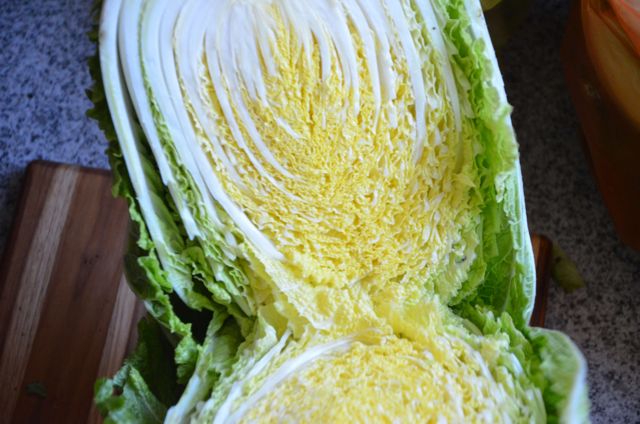
How to cut Kimjang cabbage baechoo in half It won’t be a huge disaster if you cut it all the way with a knife but it’s just easier this way and also you will not end up wasting cabbage pieces.
- In a large container, dissolve about 8 cups of salt and 17 1/2 quarts/70 Cups of cold or lukewarm water for the brine. Reserve remaining 4 cups salt for sprinkling. Please read my Kimjang tips post on discussion about salt. Solar sea salt is best if you can get them.
- Put cabbages in brine (made in step 3) – make sure the brine seeps fully into the cabbage by spreading out the leaves with your hands and swirling it around.
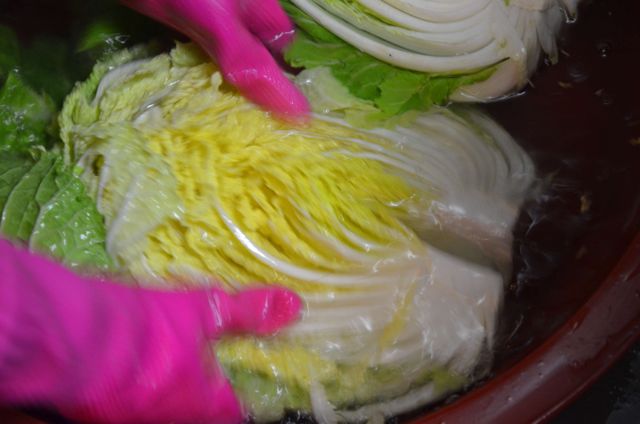
soaking cabbage in brine for Kimchi - Leave cabbages in brine for 2~3 hrs until the leaves start to get soft.
- When leaves are soft, For each 1/2 cabbage, REPEAT the following 3 steps:
-
- Take each cabbage out and let it drain for couple seconds and put in a bowl. DO NOT discard the brine because you will be putting cabbages back later on.
- Get a handful of salt from the remaining 4 cups and sprinkle (more like spraying) the salt in between leaves of each 1/2 cabbage, starting from the outer leaves. Aiming the salt mostly on the thick, white fleshy part of the cabbage.
- Put salted cabbages back into the brine.
-
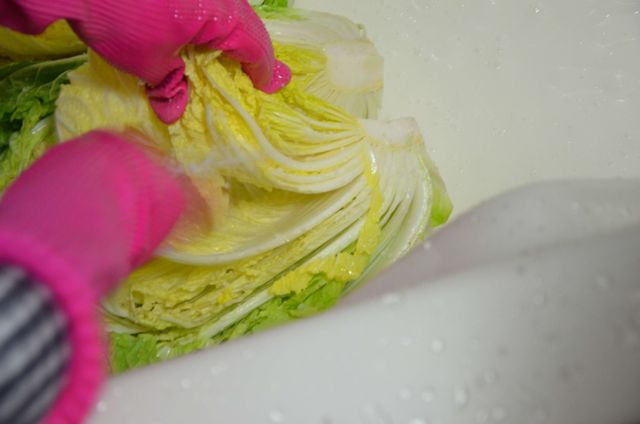
Salting cabbage for Kimchi ** We do this because the thick white fleshy part takes longer and more salt to pickle. You only need about 1/2 cup or less for each 1/2 cabbage. You may not need to do this if your cabbage has very thin white flesh or if you want to make your kimchi less salty.
7. Let cabbages sit in brine for another 10~12 hrs. Making sure cabbages are evenly pickled by rotating the ones on the top with the ones in the bottom, every 4 hrs or so.
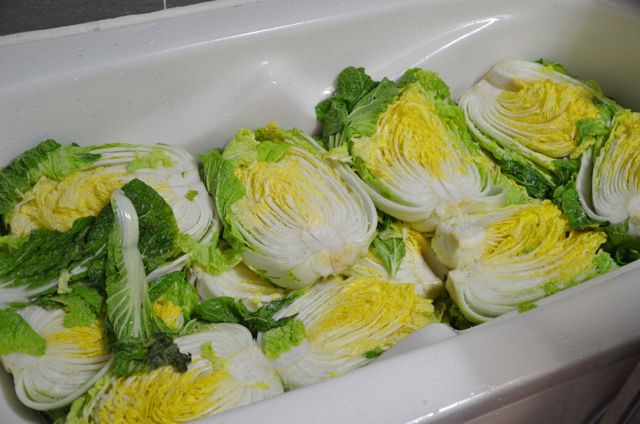
8. Next morning, the white part of the cabbage should be fully bendable like so-
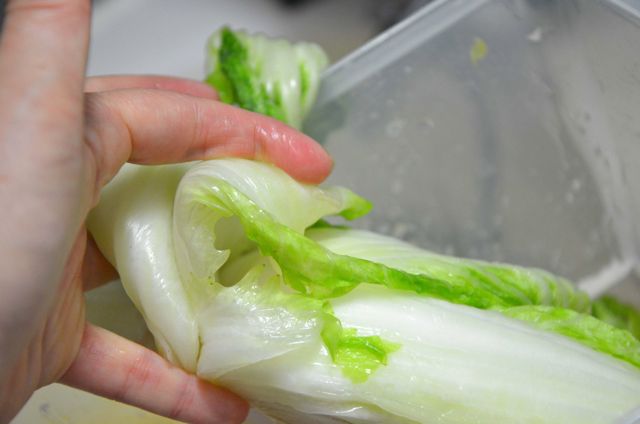
9. Rinse cabbages 3 times thoroughly. Let cabbages drain for 1 hr or so. Place the cut side down when draining.
Now you are ready to make the seasoning and finish up the Kimchi!
For the list of ingredients and recipe – see my post Kimjang Day: Part 1 – How it’s done.
For more info on ingredients and other tips – see my post Kimjang Day: Part 2 – Ingredients and Tips
Some Kimchi recipes tell you to brine cabbages for 6-8 hrs (at room temp) and this can work well for smaller batches (in fact, that’s what I do in my Easy Blender Kimchi) but traditionally, Kimjang cabbages were pickled overnight in cold winter weather.
In my opinion, brining overnight works better simply in terms of scheduling because you can start brining cabbages at night time and then finish making Kimjang kimchi the next morning. If you brine them for only 6-8 hrs, then you either end up making Kimchi at wee hours of the night or you end up starting the pickling process after midnight. None of which is fun..
So in my case, I washed and cleaned all the vegetables first during the day and then started pickling the baechoo (cabbage) in our bathtub around 7pm. Which meant I could rinse it around 8 am next morning.
Well, now you have it! With my tips on how to pickle/brine Korean cabbages for Kimchi, you should be able to make a very delicious Kimchi anytime!
About the BRINE:
- Pickling in 15% salt solution is the traditional standard for Kimchi cabbages. A recent trend is to make it less salty and many Koreans now pickle at 10~12 % salt solution. e.g. If you want to make a 10 cup brine solution, you can mix 8 1/2 C of water and 1 1/2 C salt. This is not an exact formula for making 15% but that’s what many people use to make things simpler and quicker. In this level of salinity, you will only need to pickle the cabbages in 6-8 hrs.
- Interestingly, in some coastal areas, Koreans pickle their cabbages in sea water instead of making a brine. Note, sea water’s salinity is around 3.5% to 4% which is much lower salinity than our brine so you will need to leave the cabbages much longer – usually a full 24hrs or longer.
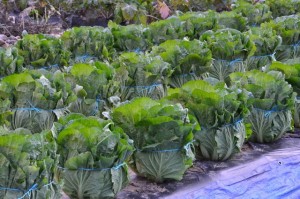
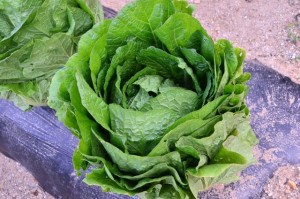

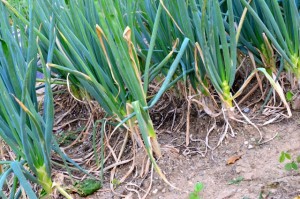
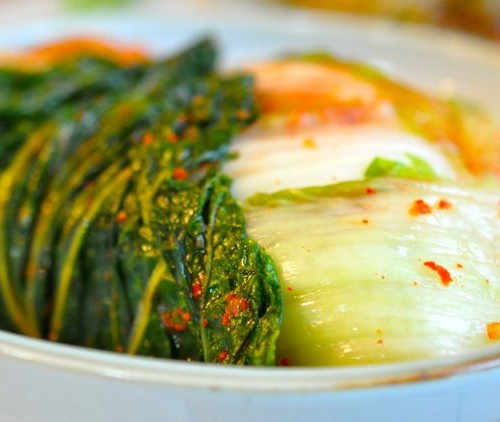
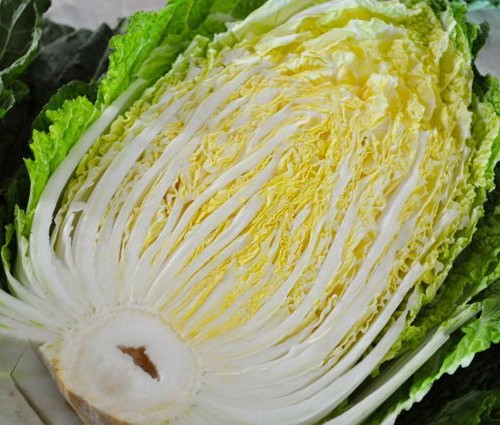

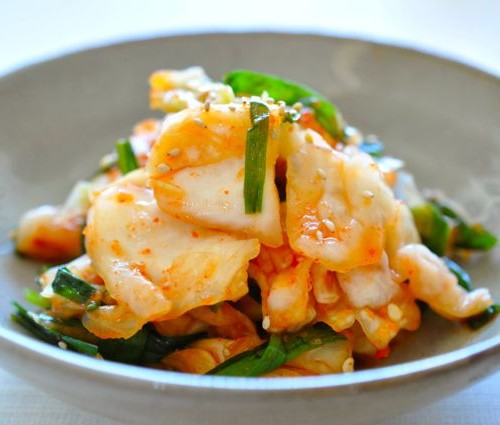

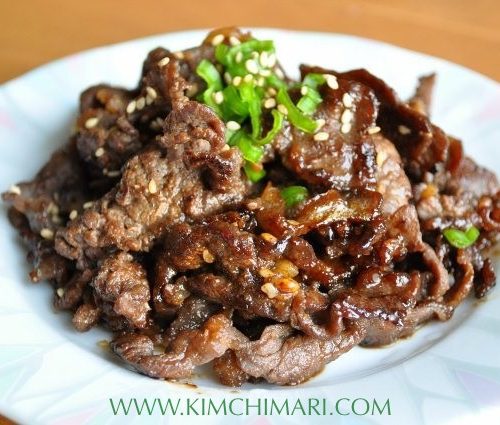
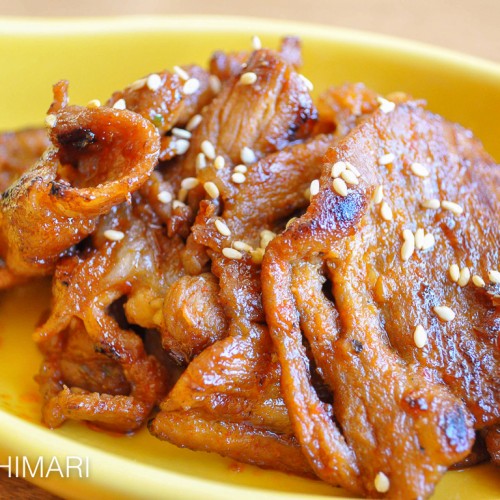
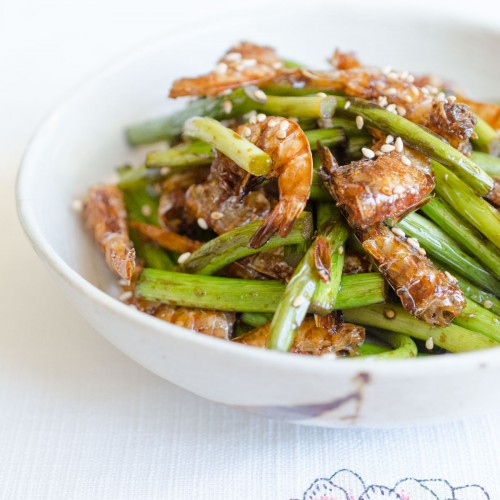
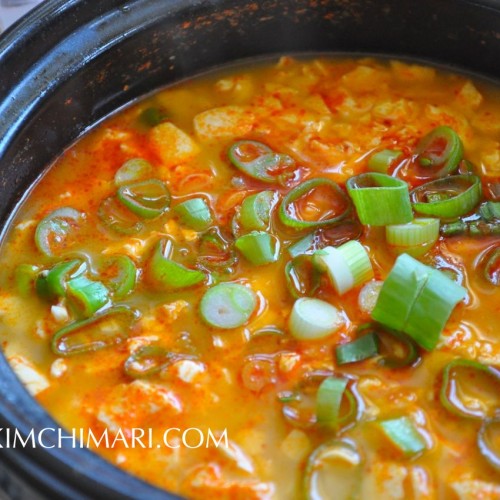
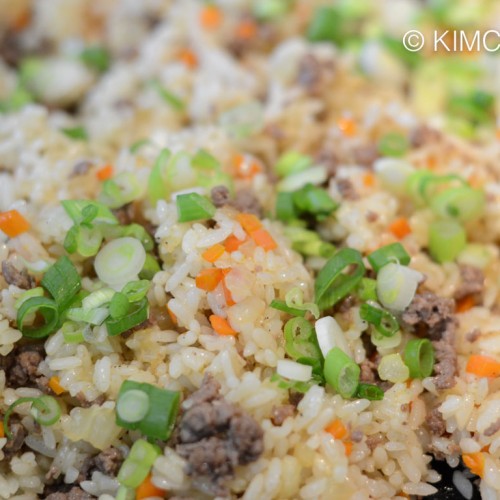
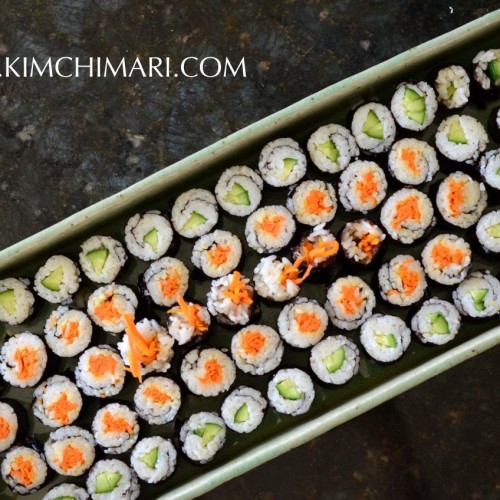









Hi. Doesn’t the air temperature in the room where the cabagges are sittinf in the brine affect the total time it takes to soften?
It can a little – but not too much. Too warm temperatures can actually make the cabbage turn mushy after fermentation.
Hello, what would likely to happen if I forgot to rinse the napa cabbage but already finish seasoning it with the kimchi paste and put it in a jar? will the saltiness subdue through time?
Oh dear.. it will probably be way too salty and won’t ripen easily as the salt amount will interfere with the fermentation. Saltiness usually gets balanced out when it ripens and you have different flavors being introduced but I’m worried that it may not ripen much at all. You can try adding some fresh radishes but not sure how much that will help.
Please describe the farming techniques for these cabbages and radishes – how are they watered, why the plastic, how do you keep flea beetles and insects from eating the leaves, how do you fertilize, etc. Also, why the rubber band? Tried to grow these, but they bolted to flowers, and bugs ate the rest. The radishes never formed bulbs. Also, are korean leeks the same as green onions? Absolutely LOVE Kfood, this will become so popular here! We have to grow our own in rural america because these items arent typically offered and we cant find any way to have cabbages and radishes shipped in bulk either. Gam-sa-ham-ni-da!
Oh my.. so many questions!! The are watered like regular vegetables. They do like cooler temps, remember they are grown in the fall into early winter in Korea. So too warm a temperature will make them bolt prematurely. Tying them with rubber band makes the cabbage grow more dense inner leaves. Bugs, you can of course use insect repellent but the best way is to cover them with mosquito net from the start to prevent white cabbage butterflies from laying eggs on them and them growing into caterpillars. The soil has to be soft for radishes to form bulbs. Korean leeks are NOT the same as green onions. For more details, please read this post – https://kimchimari.com/korean-vegetables-to-grow-in-your-garden-this-spring/ I am so happy that you want to grow these in your area – I dream of the day when I can see Korean vegetables in regular stores. Thank you so much!!
Hi, I brined napa properly then rinsed 2x and kept in the fridge. (Been making kimchi for years now) I caught covid that’s why I wasnt able to continue my kimchi☹
My brined and washed napa is in the fridge for 3weeks now. Doesnt smell bad. Do you think I can still use it for my kimchi?
Thank you for the advice!
Hmm. honestly I have seen brined napa kept for like up to a week but 3 weeks, I’m not sure. If it smells ok to you, you can always try it. Good luck! Sorry, you were sick – wish you a full recovery.
Lovely .you got another regular thanks
Thank you!! Welcome to our community!
Where are these figures coming from? Most pickled vegetables are around 2-3% salinity. The ocean is around 4% salinity. Not sure where this 15% is coming from but I can’t imagine that it would edible at that level of salt. For a small 1lb batch, 15% would be 67 grams of salt, or about 5 tablespoons.
Hi Chris, thank you for the question.
First the question about whether 15% brine is correct or whether it’s edible – I think you are misunderstanding what’s happening here. Note the brine is NOT included in the final kimchi like many common pickles are left to pickle in a 2-3% salinity brine. The brined cabbages for Kimchi are rinsed in plain water at least 3 times after brining in our 13-15% brine which means a lot of the brine will be washed away, not to mention the cabbages will absorb some of the plain water back into the vegetable and releasing some of the salt while it’s quickly immersed in water bath for rinsing. So cabbages will def. have much much lower salinity than 15% after it’s rinsed and ready for kimchi.
The traditional Kimchi is said to have about 3 to 3.5% salinity in its final product and more healthier modern versions now are made at 2% or even lower. I have not measured the salinity of my kimchis scientifically but I assure you it is very edible and delicious.
As for the salinity of sea water – yes, you are right. Honestly, it’s been too many years ago and I’m not sure why this happened but definitely a mistake. I just corrected that. I think what I meant to write is that Koreans also pickle the cabbages in sea water and that works just as well and some prefer it. However, due to the much lower salinity at 3-4% of sea water, cabbages will need to be brined for full 24hrs or longer vs 6-8 hrs in a typical 13-15% homemade brine.
Hi I’ve made sauerkraut before and you pound it and leave it in 2-3% brine. Sauerkraut doesn’t require a separate overnight brine of 15%. So I’m wondering if kimchi can just be left in a 2-3% brine and let it ferment. Just add an extra day to the ferment time. Thanks.
Hmm.. interesting question. Well, it can kind of work if you are looking to make something similar to Nabak Kimchi where cabbages are immersed in brine https://kimchimari.com/nabak-kimchi-spring-water-vg-gf/ (a bit higher than 2-3% brine) and left to ferment and ripen. But if you are looking to make the regular Napa Cabbage Kimchi which doesn’t have a lot of liquid, not sure if that will work as napa cabbage has a lot more liquid than a green cabbage (used for Sauerkraut). The cabbage needs to lose a lot of the liquid first, get shriveled up for long-term storage too. If this part is not done properly it can become mushy over time.